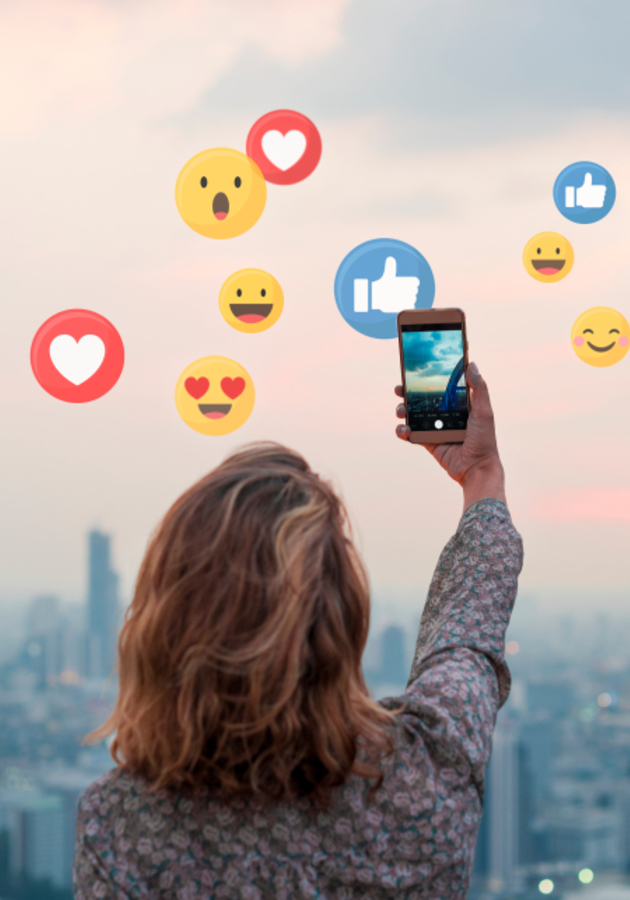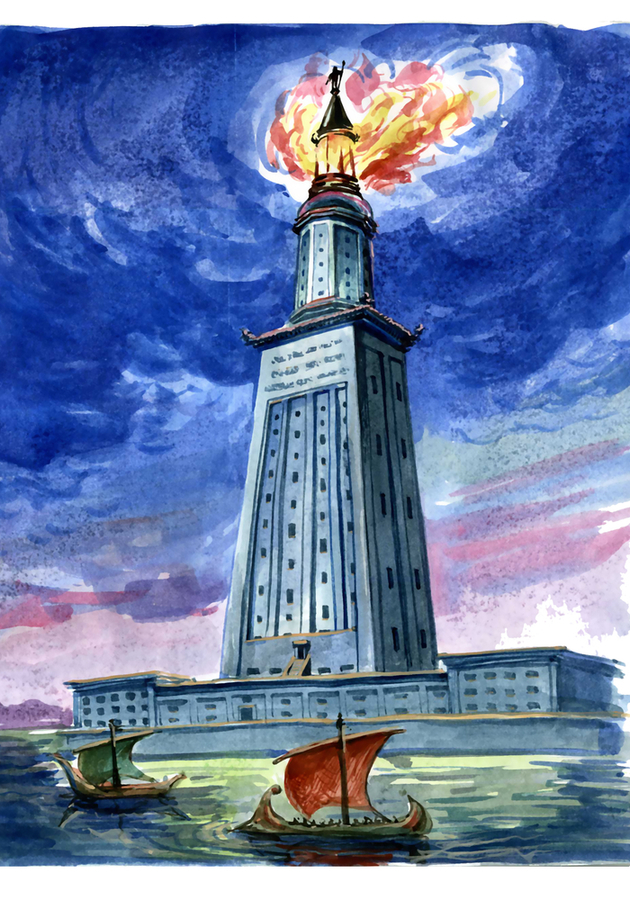The 1918 flu pandemic lasted from February 1918 to April 1920, infected about a third of the world’s population at the time and killed as many as 100 million people. To put that into perspective, in a single year the disease killed more humans than the Black Death of the Middle Ages killed in a century. “The Great Influenza” by John M. Barry tells the whole story, focusing primarily on the United States. Get ready to hear it out.
A brief history of 19th-century medicine
The story of the 1918 flu pandemic begins about half a century before the outbreak. “Up to a few decades before World War I,” writes Barry, “the practice of medicine had remained quite literally almost unchanged from the time of Hippocrates more than two thousand years earlier. Then, in Europe first, medical science changed and, finally, the practice of medicine changed.”
In a somewhat forgotten 1840 essay titled ”On Miasmata and Contagia,” a Bavarian physician by the name of Jacob Henle first formulated the modern germ theory. Twenty years later, French microbiologist Louis Pasteur converted quite a few people to this theory when he proved that it was living organisms – and not a chemical chain reaction – that caused fermentation. The most important among these early converts was British surgeon Joseph Lister who immediately applied Pasteur’s findings to surgery, “instituting antiseptic conditions in the operating room and slashing the percentage of patients who died from infections after surgery.” Finally, in 1882, eminent German physician Robert Koch discovered the tubercle bacillus, the cause of tuberculosis, and cemented both his reputation and the validity of germ theory.
However, even after European medicine changed, medicine in the United States did not. Both in research and education, American medicine lagged far behind. At the time when Lister, Pasteur and Koch were revolutionizing our understanding of diseases, one could get a Harvard degree in medicine, even after failing four out of nine courses. But then again, European medical schools were subsidized by the state. American medical schools earned money from student fees only, so they could not afford to fail too many students. They could not afford too many professors either, so until as late as the 1870s, medical education in the United States consisted of nothing more than two four-month terms of lectures.
William Welch and the Heroic Age of American medicine
American medicine changed in 1873, when billionaire Johns Hopkins died, leaving behind a trust of $3.5 million to found a university and hospital. Three years later, Johns Hopkins University opened, and in 1893, so did its medical school. Both gained instant credibility by recruiting internationally respected scientists such as Darwin’s bulldog Thomas Huxley, and the most promising German and English students. The strategy was so successful that, in the words of Barry, “by the outbreak of World War I, American medical science had caught up to Europe and was about to surpass it.”
The first dean of the Johns Hopkins School of Medicine was an American physician by the name of William Henry Welch. Ever since the beginning of his mandate, he had set his eyes on a threefold goal: to transform U.S. medicine and make it science-based; to turn the Hopkins model into a nationwide strategy; and to convince American philanthropists to fund the founding of a separate school to study public health in a scientific manner.
In a very brief period of time, he achieved success on all three accounts. Under Welch’s guidance, the Johns Hopkins Medical School became one of the world’s leaders in medical and scientific research. Inspired by its achievements, in 1901, business magnate John D. Rockefeller sponsored the founding of the Rockefeller Institute for Medical Research, with Simon Flexner – a student of Welch’s at Hopkins – acting as its first director. Nine years later, the Rockefeller Hospital became America’s first facility for clinical research and thrived under the leadership of Rufus Cole. In the meantime, Harvard, Penn and Columbia followed Hopkins’ example in requiring medical students to have a college degree.
Pleased to have transformed American medical science in the span of just two decades, on the eve of America’s entry into World War I, Welch began to pursue his final goal – the establishment of an institution focused on prevention and public health. Owing to his personality and career, he eventually convinced enough people to finance the founding of this “new and small university.” The Johns Hopkins School of Hygiene and Public Health was scheduled to open October 1, 1918. Welch – who had resigned as a professor at the medical school to be its first dean – was very sick on the day of the scheduled opening. He had recently returned from a trip to Camp Devens, an Army base outside Boston, to investigate a vicious epidemic. He was afraid he had contracted the strange disease himself.
The “Spanish” flu: an origin story
Epidemiological evidence suggests that the disease Welch picked up while investigating the Devens outbreak originated in Haskell County, Texas, at the very beginning of 1918. However, for the first six months of that year, the only reference to this disease – described as an “influenza of severe type” – could be found in ”Public Health Reports,” a weekly journal published by the U.S. Public Health Service “to alert health officials to outbreaks of all communicable diseases.” The worrying article was written by Dr. Loring Miner, a Haskell County coroner. Unfortunately, no one really believed him at the time, and nobody heeded his warning. Until it was too late.
Miner was right to be concerned from the start. In his practice, he had faced influenza often, but he had never seen influenza like the one of February 1918. It was “violent, rapid in its progress through the body, and sometimes lethal.” Moreover, unlike common influenza – which “acts like a bully,” attacking and tormenting the weakest in society – this influenza killed the youngest, the fittest, and the strongest. The part that troubled and frightened Miner the most was that influenza, though highly contagious, was neither a “reportable” disease nor a disease that any state or federal public health agency tracked.
There was another thing that Miner should have feared: the War. In every war in American history before World War I, explains Barry, “disease had killed more soldiers than combat.” And just a few months before a patient first came to Miner with a high fever and violent headache, the United States declared war on Germany. That’s why the government did not bother with Miner’s warnings: it was busy recruiting and training soldiers, organizing factories and facilities, and cruelly censoring information to preserve high morale.
In fact, it was due to censorship that the disease eventually got the name it is famous for today: the Spanish flu. Since Spain was neutral, only Spanish newspapers were allowed to report the epidemic’s effects and to follow the spread of the disease throughout the war-ravaged European continent. Especially after King Alfonse XIII fell seriously ill with the disease, Spanish papers were filled with reports of the influenza. These stories created a false impression of Spain being hit especially hard by the epidemic and gave rise to the name “Spanish flu.” In fact, by the time the influenza picked up its own name, it had mutated into something far more lethal than what Miner had observed in Haskell county in the spring of 1918.
A few words about influenza viruses (or: it begins)
Viruses are the simplest biological systems on our planet, bordering on the edge between living and nonliving. They consist of nothing more but DNA or RNA (never both) and a minimal shell. Their only job is to replicate, and they can only do this inside a host cell.
Now, influenza is an RNA virus. Unlike DNA, which has “a kind of built-in proofreading mechanism to cut down on copying mistakes,” RNA has no way to protect itself against copying errors. However, from the perspective of a virus, this is great news, because more copying errors mean more mutations, and more mutations mean more tickets in the genetic lottery.
It was some kind of mutation that changed everything in 1918. The natural home of most influenza viruses is in birds, but sometime before Miner encountered a new influenza virus in Haskell county, the virus (called H1N1 by modern epidemiologists) had probably jumped from a bird to a swine. Massive exposure to an avian virus can also infect man directly, but an avian virus cannot go from person-to-person. Pigs provided the perfect “mixing bowl” for bird and human viruses because they have receptors for both. That helped the avian influenza virus mutate once again. This time, when it jumped from swine to man, the H1N1 virus adapted and was then able to infect from person-to-person. And that’s precisely what it started doing.
Somehow, some Haskell farmer carried the virus to Camp Funston in eastern Kansas, where an army cook by the name of Albert Gitchell reported ill with influenza at sick call on March 4, 1918. On that fateful day, the pandemic officially started. Within three weeks, more than 1,100 soldiers were sick enough to need treatment; 237 of them developed pneumonia; 38 died. The number wasn’t high enough to draw attention, so the Army didn’t stop transferring soldiers from Funston to other American bases and to Europe. Their job was to kill other people. Little could they guess at the time, ominously writes Barry, they would be more proficient at it than they could have ever imagined.
“Some new kind of infection… or plague”
The virus traveled with the soldiers all across North and South America, Europe, Africa, Asia and the scattered Pacific islands. Throughout its journey, it constantly mutated, adapting to the human organism. The human organism, however, failed to adapt as quickly to the virus.
This is the reason why it was the strongest and healthiest who succumbed to the influenza pandemic of 1918. Precisely because it was robust, their immune response was inadequate to the dangers posed by the external infection. Overestimating them, it quickly filled the lungs of young adults with “fluid and debris” and made it impossible for the exchange of oxygen to take place. Rather than a bully preying on the weak like his cousin-viruses, the H1N1 virus acted as a sort of a Machiavellian conspirator turning the strong against themselves.
Back in 1918, the strongest Americans were recruited by the Army. Unsurprisingly, not many were afraid by the relatively mild first wave of the flu. But in September of that year, at Camp Devens outside Boston, soldiers started reporting ill with quite a vicious form of influenza. It didn’t take long for Dr. Roy Grist, one of the army physicians at the camp’s hospital, to notice that the spring strain of the H1N1 virus had come back with a vengeance.
“It is horrible,” he wrote to a colleague. “It is only a matter of a few hours until death comes […] One can stand it to see one, two or twenty men die, but to see these poor devils dropping like flies… We have been averaging about 100 deaths per day. Pneumonia means in about all cases death.” On September 24 alone, 342 men were diagnosed with pneumonia. Two days later, the doctors stopped admitting patients to the hospital, no matter how ill. There was no more room.
It was then that they contacted the foremost medical practitioner in the United States, William Welch. He arrived – together with Rufus Cole and a few other researchers – soon after. It took Welch just a few minutes in the autopsy room to realize the gravity of the situation. “This must be some new kind of infection,” he said nervously to Cole. “Or plague.” The chilling word echoed disturbingly in the ears of everybody present.
Philadelphia, parades and pandemics
By the time Welch had realized what the physicians at Camp Devens were dealing with, it was already a bit late. On September 7, 300 sailors from Boston arrived at Philadelphia Navy Yard, bringing the virus to one of the most populous U.S. cities. In charge of raising money for wartime efforts, Philadelphia was preparing for a big parade at the time. Local doctors urged Wilmer Krusen, then-director of the Philadelphia Department of Public Health and Charities, to cancel the parade on account of the ongoing influenza epidemic. Krusen refused, publicly denying that influenza posed any threat to the city.
On September 28, 1918, more than 200,000 people flocked to see the Philadelphia Liberty Loans Parade. Just three days later – the incubation period of the influenza – every single bed in Philadelphia’s 31 hospitals was filled. Krusen, the man who so adamantly tried assuring Philadelphians they were in no danger, was forced to issue a grim pronouncement: “The epidemic is now present in the civilian population and is assuming the type found in naval stations and cantonments.” Over the following month, more than 47,000 Philadelphians contracted the H1N1 virus; more than 12,000 of them died. On the single day of October 10, the epidemic killed 759 people; the average weekly mortality rate prior to the outbreak was 485.
What happened in Philadelphia, says Barry, would prove to be “a model for what would happen elsewhere.” Scientists far and wide tried warning state officials of the dangers of the epidemic, advocating for quarantines and limited movement of troops and citizens. However, officials – especially in the United States – refused to listen to the warnings, deliberately obscuring the facts and even going so far to lie to the public about them. To them, war morale was far more important. By the end of the pandemic, the Spanish flu would claim the lives of about 675,000 Americans, more than 63,000 of them military personnel. American combat deaths in World War I totaled 53,402.
Unlikely consequences
Because of the inaction of the U.S. government at the beginning of 1918, the Spanish flu quickly spread all over the world. Over the following two years, half a billion people fell ill with it. In the 1940s, Australian virologist and Nobel laureate Macfarlane Burnet estimated the death toll at 50 to 100 million, about 5% of the world’s population. Most of these deaths came in the horrendous fall of 1918, possibly the deadliest three months in all of human history.
As frightening as these numbers are, they don’t tell the whole story. You see, the Spanish flu left an indelible mark on many of the survivors as well, affecting their brain and their nervous system and causing “profound mental inertia with intense physical prostration.” Many patients, according to many contemporary reports, remained apathetic and depressed long after the symptoms of the disease subsided. An Italian doctor even speculated that this mental collapse could persist, and go on to become actual dementia. Some have linked influenza to an increase in Parkinson’s disease a decade later, and others identified it as a contributing cause to schizophrenia. Either way, the connection between various mental instabilities and the Spanish flu seemed clear to many experts.
On April 3, 1919, while in France negotiating the Treaty of Versailles to end World War I, U.S. president Woodrow Wilson contracted the Spanish flu. Just a few days before, he was accused of being “pro-German” by the Prime Minister of France, Georges Clemenceau, on account of Wilson’s insistence for “peace without victory.” The French, of course, were only interested in weakening Germany economically, militarily and territorially, which made them “damnable” in Wilson’s eyes on April 2, 1919, the day before he fell ill to the H1N1 virus. Following several exhausting days with the illness, he rejoined the negotiations. Surprisingly, almost immediately after, he agreed to the terms proposed by France which he had so vehemently opposed before the disease.
Repulsed, famous economist John Maynard Keynes, the principal representative of the British Treasury, quit the conference, calling Wilson “the greatest fraud on earth” and describing the treaty itself as “Carthaginian peace” – that is to say, a very brutal, enemy-crushing peace that might cause unforeseen troubles. He was right. Today’s historians agree that “the harshness toward Germany of the Paris peace treaty helped create the economic hardship, nationalistic reaction, and political chaos that fostered the rise of Adolf Hitler.” In other words, it’s not an exaggeration to say that the great influenza of 1918 might have been an indirect cause of the Second World War.
Final notes
Soon after it was first published, “The Great Influenza” was lauded by a Chicago Tribune reviewer as both “a masterful narrative” and “an authoritative and disturbing morality tale.”
Unfortunately, with hindsight, we can only agree – wholeheartedly and without any restraint – with the former. As the 2020 coronavirus pandemic demonstrated, we seem to have learned nothing from previous pandemics and outbreaks. Hopefully, we’ll learn for the next one.
12min tip
Viruses are deadlier than wars. Lies exacerbate both. In the wake of any outbreak, place your trust in science and experts only. The strongest weapon against an epidemic is the truth.





























